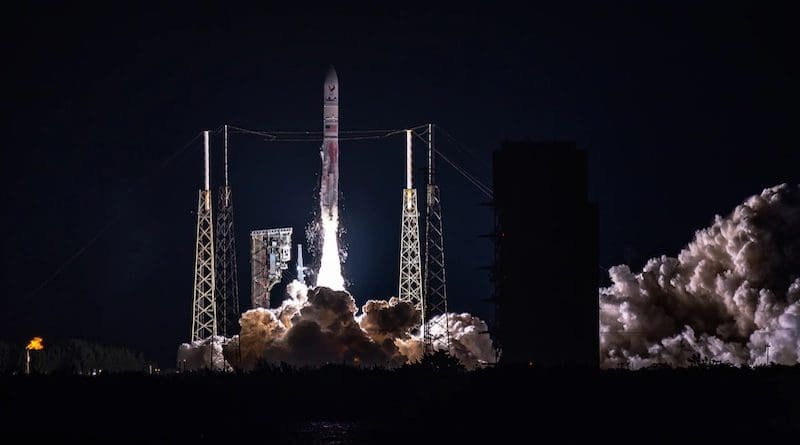Space Force Official Outlines Roadmap For Commercial Partnerships
By DoD News
By Joseph Clark
The Space Force aims to build upon its foundation of strong partnerships with the commercial sector to maintain the United States’ competitive advantage in the frontier warfare domain, a senior service official said Tuesday.
Lt. Gen. Shawn N. Bratton, the Space Force’s deputy chief of space operations, strategy, plans, programs and requirements, said the service’s recently released Commercial Space Strategy challenges leaders to think about new pathways for commercial partnerships and capitalize on rapidly emerging technology.
“How do we make ourselves a little uncomfortable and go into areas where we haven’t explored, or we haven’t partnered with commercial as much?” Bratton said in describing the genesis of the strategy during a discussion hosted by the Atlantic Council, a nonpartisan public policy organization in Washington. “And then, how do we build on just this long history where we’ve worked with commercial partners in more traditional areas like satellite communications.”
The strategy outlines four lines of effort to operationalize the integration of commercial space capabilities: collaborative transparency, operational and technical integration, risk management and forward-leaning engagement to secure the future.
It describes an end-state where commercial space solutions are integrated across Space Force units. As part of the strategy, the Space Force will also seek to integrate other services’ requirements into its commercial utilization plans.
Bratton said the strategy is designed to ensure the Space Force taps into innovation in ways that extend beyond previous partnerships with the commercial sector.
“Historically, we have always … received commercial services, paid for commercial services, in ways that we were sort of very comfortable,” he said.
He also said those commercial partnerships have traditionally been in areas of satellite communications and domain awareness.
But, he said, commercial technologies have made capabilities available that are useful for a broader array of mission areas, especially over the last decade.
Capitalizing on those opportunities requires thinking beyond traditional acquisition stovepipes to take advantage of “rapidly moving commercial enterprise.”
The Space Force’s strategy follows the release earlier this month of the Defense Department’s Commercial Space Integration Strategy, which outlines the department’s approach to effectively harnessing that innovation.
The departmentwide strategy highlights four priorities to achieve integration with commercial partners.
First, it calls for outlining DOD’s requirements in contracts and other agreements to ensure commercial solutions are available when needed.
Second, the strategy involves the integration of commercial solutions into defense architecture during peacetime — including planning, training and day-to-day operations — to ensure warfighters can seamlessly employ those solutions during crisis or conflict.
Third, the strategy requires protecting and defending against threats to U.S. national security space assets, including those in space and on the ground and, where appropriate, commercial space solutions.
Finally, the strategy emphasizes that DOD will use its full range of financial, contractual and policy tools to support the development of new, commercial space solutions that have the potential to support the joint force.
John F. Plumb, assistant secretary of defense for space policy, said the departmentwide strategy reflects the imperative to seize on the commercial sector’s ability to rapidly develop and field technology.
“The speed and the innovation in the commercial sector, especially at this time in our history, is just incredible,” Plumb said earlier this month in describing the strategy. “And so, the question is: ‘Shouldn’t we be trying to harness that?’ And the answer is, of course, ‘Yes.'”

